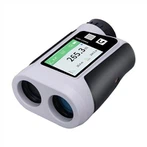How to correctly select filter capacitors in a switch mode power supply design?
Filter capacitors play a very important role in switching power supplies, and how to correctly select filter capacitors, especially the selection of output filter capacitors, is a concern for every engineering and technical personnel. We can see various capacitors on the power filter circuit, with different capacitance values of 100uF, 10uF, 100nF, and 10nF. So how are these parameters determined? Don't tell me you copied someone else's schematic, haha.
The ordinary electrolytic capacitors used in 50Hz power frequency circuits have a pulsating voltage frequency of only 100Hz and a charging and discharging time on the order of milliseconds. To achieve a smaller pulsation coefficient, the required capacitance is as high as hundreds of thousands of μ F. Therefore, the goal of ordinary low-frequency aluminum electrolytic capacitors is mainly to increase capacitance, and the capacitance, loss tangent value, and leakage current of capacitors are the main parameters to distinguish their advantages and disadvantages. The output filtering electrolytic capacitors in switch mode power supplies have sawtooth voltage frequencies as high as tens of kHz, even tens of MHz. At this time, capacitance is not the main indicator. The standard for measuring the quality of high-frequency aluminum electrolytic capacitors is the "impedance frequency" characteristic, which requires a low equivalent impedance within the operating frequency of the switch mode power supply and good filtering effect on high-frequency peak signals generated by semiconductor devices during operation.
Ordinary low-frequency electrolytic capacitors begin to exhibit inductance around 10kHz, which cannot meet the requirements of switching power supplies. The high-frequency aluminum electrolytic capacitor specifically designed for switching power supplies has four terminals, with the two ends of the positive aluminum plate leading out as the positive electrode of the capacitor, and the two ends of the negative aluminum plate leading out as the negative electrode. Current flows from one positive terminal of a four terminal capacitor, passes through the interior of the capacitor, and then flows from the other positive terminal to the load; The current returning from the load also flows from one negative terminal of the capacitor, and then from the other negative terminal to the negative terminal of the power supply.
Due to the excellent high-frequency characteristics of the four terminal capacitor, it provides an extremely advantageous means to reduce voltage ripple components and suppress switch spike noise. High frequency aluminum electrolytic capacitors also have a multi-core form, which divides the aluminum foil into shorter segments and connects them in parallel with multiple lead out pieces to reduce the impedance component in the capacitance impedance. And using low resistivity materials as lead out terminals improves the capacitor's ability to withstand high currents.
To ensure stable and reliable operation of digital circuits, the power supply must be "clean", and energy replenishment must be timely, that is, filtering and decoupling must be good. What is filtering decoupling? Simply put, it means storing energy when the chip does not require current, and being able to replenish energy in a timely manner when you need current. Don't tell me that this responsibility is not for DCDC or LDO? Yes, they can handle low frequencies, but high-speed digital systems are different.






